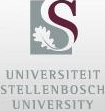Prof Phillip Strydom from the Department of Animal Sciences in the Faculty of AgriSciences at Stellenbosch University delivered his inaugural lecture on Thursday, 30 May 2024. The title of his lecture was “'The perfect steak' – are we there yet?".
Strydom spoke to the Corporate Communication and Marketing Division about how he and his team use their research to help improve the quality of meat.
Tell us more about your research and why you became interested in this specific field.
My research over the past three and a half decades has involved various processes and factors involved in the quality (and yield) of the final product. Most of my focus was on beef, although I also worked on sheep meat, and more recently on pork and chicken. I was trained as an animal nutritionist following my four-year BSc degree, after which I majored in animal nutrition in my honours year.
However, due to bursary responsibilities I ended up at the Meat Science Centre in the Animal and Dairy Science Institute in Irene, Centurion (the then Department of Agriculture and now the Agricultural Research Council – ARC) and started basically from scratch as a meat scientist. I quickly learnt that the miracle of producing good quality meat lies in the combination of so many intricate processes along the value chain that needed careful coordination to produce nutritious, affordable, safe and palatable meat. This immediately caught my attention and I have been hooked ever since.
Meat science is not a single discipline as many would think but rather a combination of genetics, nutrition, biochemistry, chemistry and physiology. And in the end, it is what consumers see in the shop and what they experience at home that makes them come back (or not) for more. Finding ways to make them come back for more is the quest that I hope everybody in the meat industry will take to heart in pursuing their business.
How would you describe the relevance of your work, especially for the meat industry in Sout Africa?
Despite the migration of South Africa's meat industry into a vertically integrated system of production, harvesting and processing (up to retail level), the focus is still on efficiency and quantity instead of quality due to various economic pressures. My team and I have always been studying and propagating a value-chain (pathways) approach because we believe that Robert Mondavi's philosophy for winemaking “You can make bad wine with great grapes, but you can't make great wine with bad grapes" also applies to the production of quality meat.
The meat industry was deregulated in 1992. What was the impact of this on meat production and quality?
Deregulation opened the free enterprise market in the industry, and very soon the feedlot industry took advantage of that. Within a decade or so, the ratio of pasture: feedlot cattle slaughterings changed from 30:70 to 85:15. This led to an increase in the supply of beef providing meat from young feedlot cattle to the consumer. However, the nature of the feedlot business dictates that efficiency takes priority over quality and this gave rise to many challenges with regards to product quality. I often get the impression that the technology to improve quality is prioritised, while the understanding of the processes involved in the production of quality meat is often neglected in research and development resulting in a final product of poor quality offered to the consumer.
Based on your research, what should we do to ensure sustainable meat production?
Intensive production of meat is here to stay when seen in the context of an ever-growing population. However, focusing on quantity and efficiency without considering quality is detrimental to the sustainability of the industry. South African consumers shouldn't just be concerned about affordability when selecting meat as part of their protein basket. Safety is the priority, nutritional value is known and accepted by most, but how the product is presented (visual quality) and how it tastes (tenderness, juiciness and flavour) will dictate whether meat continues to be the subject of discussion at the dining table. Moreover, by focusing on all aspects of quality, in addition to the efficient supply of meat, will mitigate product loss (not through spoilage in this case) mostly due to purge (the reddish watery discharge from meat as it thaws or is stored) because managing meat quality also involves maintaining good technological properties (such as water-holding capacity) and good appearance.
What keeps you motivated when things get tough in the challenging environment of higher education?
I have only spent four years as an academic because I have been employed by the ARC for more than 35 years. However, I have always been involved in the training of undergraduate and postgraduate students with university colleagues across the country. Funding has always been the biggest challenge irrespective of where I worked. My motivation often comes from individuals in the meat business that recognise and appreciate the value of research and knowledge, and keep on investing in better processes to produce and market quality meat.
What aspects of your work do you enjoy the most?
Getting my hands dirty when joining a postgraduate student in research trials. Hands-on experiences will always take priority over theoretical knowledge. Sharing your own experience with willing students is always rewarding.
Tell us something exciting about yourself that people would not expect.
I consume very little meat and when given the choice I would rather choose good quality (French) cheese than a rump steak or lamb chop. However, I will never be able not to eat meat and when I do, I prefer quality over quantity. Taste rather than satiety.
How do you spend your free time?
I used to be a keen runner until back problems curbed my running. Hard but social cycling keeps both body and mind healthy. Camping and connecting with nature give me energy.
- Photo by Ignus Dreyer (Stellenbosch Centre for Photographic Services)

